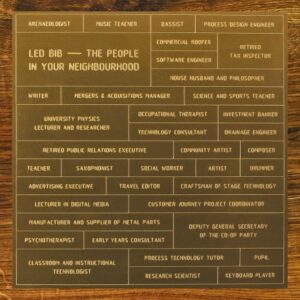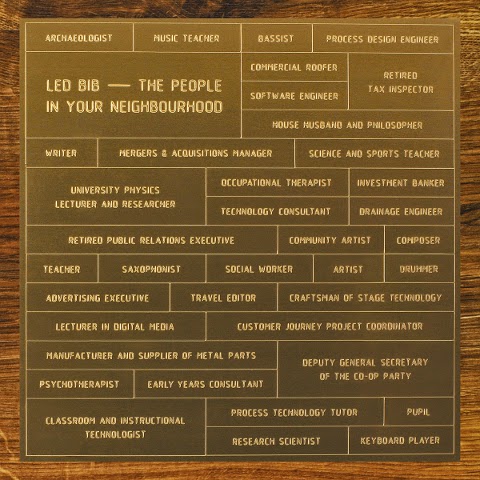I imagine when Thom Yorke gets plenty of sleep and has a decent breakfast of bangers and mash, he follows up such moments of wistful idyll and transient happiness by writing songs for Chris Martin. These gifts flutter through the mail, somehow ending up in Martin’s letterbox—wrapped in bows and the most ornate paper money can buy. After minor refinements in the workshop, the whole lot becomes a Coldplay album. Ghost Stories, the band’s latest release, fits into this scenario, though the only thing Radiohead really has in common with Martin’s outfit is their guitarists’ first names. Going track by track to pinpoint the sources and consequent derivation involved in this recording would only lend hyperbole to an otherwise sound hypothesis; suffice to say Ghost is packed with Radiohead-inflected works like “Magic.” That one features a glitchy percussion track with slurred-out bass wrapped lovingly around it. It’s ridiculously familiar yet offensively reductionist.
Led Bib The People in Your Neighbourhood (Cuneiform Records)
Now on to jazz. Led Bib’s latest, The People in Your Neighbourhood, reflects a genuine attempt to engage the genre of jazz music and move it forcefully into the midst of the 21st century. With a preponderance of saxophones vying for cosmic dominance, whistles and electronic hoopla pouring out all at once and a rhythm section as sensitive as it is blunt, the music on this album swirls and dances. The sound is all involved with the earthy ghost of Ornette Coleman, the interplanetary spirit of Sun Ra and the outrageous experimentalism of Frank Zappa. There is an eastern twist to some of the work here; the oft-repeated leitmotif on “New Teles” is as hypnotic as it is swaggering especially when used as a launching pad for mind-bending solos by alto players Pete Grogan and Chris Williams. With 11 tracks of premium jazz music in this neighborhood, please be prepared for a long, mind-altering visit.
Plaid Reachy Prints (Warp Records)
Meanwhile, in the heavily transistorized world of post-techno IDM, Plaid have released a new album on Warp Records provocatively titled Reachy Prints. The second track, “Hawkmoth,” features a sentimental melody bound to a breathy rhythm track. Over the course of five minutes, that beat constantly deconstructs and reconstructs itself, making narrative reference elusively dreamy. The Tony Banks-ish keyboard instrumentation adds a layer of arboreal flair to the proceedings, as if the dances done to this joint might be best performed in the forest primeval as opposed to any number of high street dance clubs. “Tether,” the seventh composition, provides a brittle counterpoint to Turner and Handley’s burgeoning romanticism; contrasts like this one make Reachy Prints a worthy listen whether you prefer to get down to the sound—as the kids say—or prefer to listen meditatively, as men of my generation might be apt to do.






